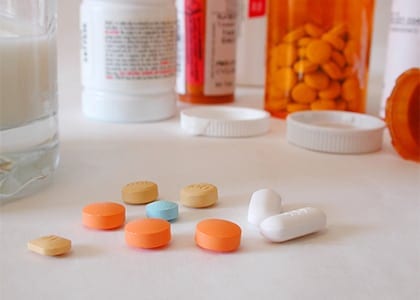
It seems simple enough. Open your mouth and pop in the pill. Yet, this seemingly simple act results in more than 700,000 visits to the hospital emergency department each year, according to the Centers for Disease Control and Prevention. And 120,000 of these visits result in hospitalization. That’s because, although taking medications is easy, if you don’t know exactly what you’re taking and why, adverse drug events can develop. What’s troubling is that medication errors, which can cause harm and even death, are preventable events.
There are many reasons for the large number of drug mishaps. Poor communication between providers and patients is high on the list. Errors in dispensing, typically because of sound-alike names of medications or look-alike drugs is another.
Added to the problem is the sheer volume of prescription drugs. According to a report by the Henry J. Kaiser Family Foundation, in 2013 almost 4 billion prescription drugs were filled at retail pharmacies. The volume of drugs indicates the involvement of a large number of people. The journal Mayo Clinic Proceedings noted that nearly 70 percent of the U.S. population is on at least one prescription drug, and more than half take two.
Surprisingly, one-fifth of the population takes five or more drugs. And that’s the problem. Pharmacists from the Food and Drug Administration have determined that the risk of adverse drug reactions increases dramatically after a person is on four or more medications.
Some groups of people are hit particularly hard. Children under the age of 19 and those 65 and older are more likely to suffer adverse reactions. Also, certain drugs, such as blood thinners, antibiotics and insulin for diabetes, tend to be the biggest culprits behind medication mishaps.
The volume of drugs is just part of the problem. Another significant part is that many people are merely recipients of care without understanding exactly what care they are receiving. They are often reluctant to ask questions or seek more detailed explanations. The best way to prevent errors is to be an active member of your health care team. That means taking part in decisions about your health. Research shows that patients who are more involved with their care tend to have better outcomes.
Questions to ask the doctor or pharmacist before filling that prescription

- What is the name (brand and generic) of the medicine? What is it for?
- What’s the dose?
- How do I take it and how often?
- What food, drinks (alcoholic and non-alcoholic) or other medicines should I avoid while taking this medicine?
- What are the possible side effects? What should I do if I have side effects?
- What should I do if I miss a dose or accidentally take more than the recommended dose?
- When will the medicine start working?
- Can I take this medication with all my other medications?
- Should I take this drug if I have a certain medical condition?
- Is there any written information I can take home with me?






